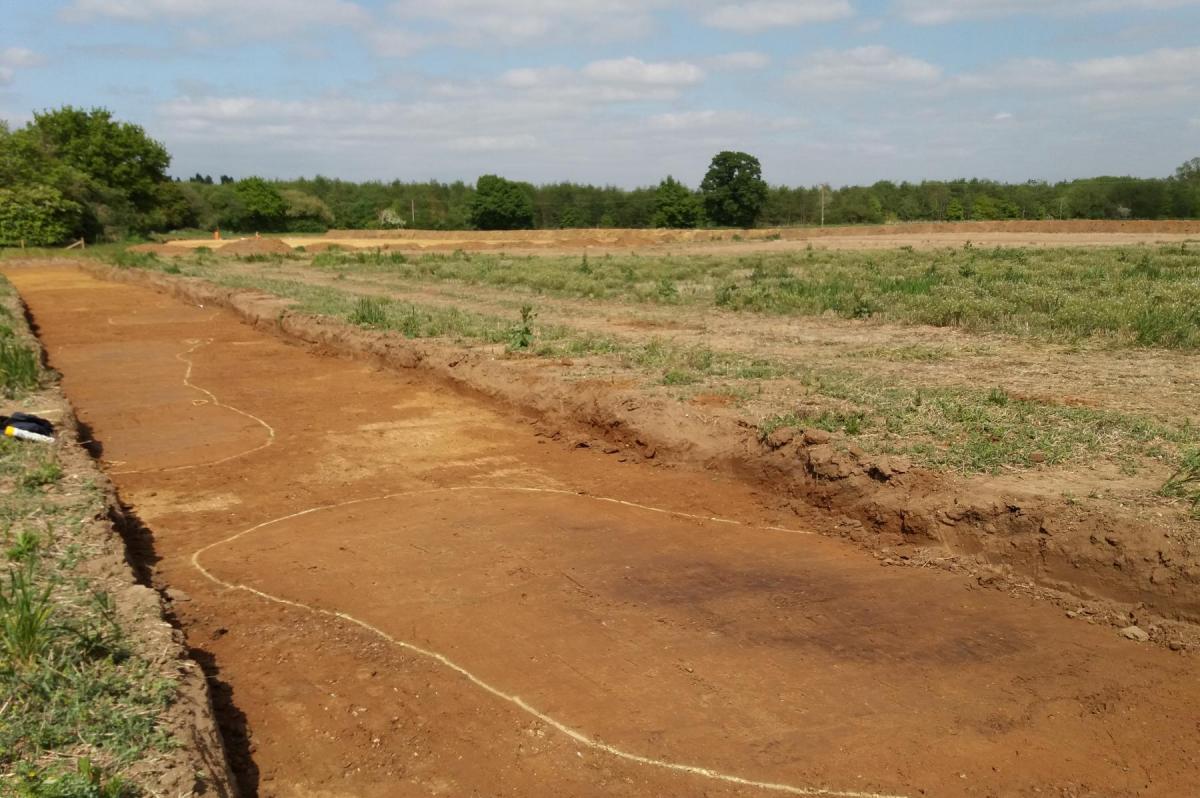During archaeological fieldwork in 2017 field archaeologists from WA discovered a previously unknown causewayed enclosure at CEMEX UK’s Riding Court Farm quarry, near Datchet, Berkshire. This is a significant discovery and will add considerable new knowledge to the understanding of the Neolithic in the Middle Thames Valley. Fieldwork director, John Powell, describes the discovery and the methods of excavation below:
We had spent 10 months excavating on the site in 2016 and had started to build up a picture of the prehistoric and Romano-British activity in the area. On returning to the quarry in 2017 we were hoping to find further evidence of Bronze Age settlement activity.
We were supervising the machine removal of topsoil to the north of Phase 5, in long 6 m wide strips, when we found the first ditch segment, it was quite wide and was only partially exposed. Each strip can be up to 140 m long, so we had to wait to for the machine to complete a strip before it was back to the ditch, sometimes this can take up to a day. As work progressed the first ditch was seen to end and after a short gap a second started, some worked flints and pottery sherds were visible on its surface. By the time of the third segment a slight curve in its shape was noticed.
It was this curve that gave us a clue to the nature of the ditches. During works on the conveyor line in 2016 (an access road that runs down the centre of the quarry), we had found a ditch-like feature that had Early Neolithic pottery, worked flints and antler in its fills, two pits close by had also contained Early Neolithic pottery. Our canteen and tool shed cabins now occupied the rough area of these ditches. On the opposite side of the area that we were machining in 2017 we had found another section of ditch. I asked one of the team members to stand next to it, with the cabins behind, whilst I stood next to the curving ditch segment.

The three points seemed to line up − now I understand that it is easy to link three points together with a curving line! But something told me that these three separate areas of ditches belonged together. I remember phoning Gareth (Project Manager) and saying I think I’ve found a causewayed enclosure!
Due to the needs of the quarry we then stopped work in Phase 5 for some time while we concentrated our efforts in other areas of the site. In the meantime, the ditches were cleaned, photographed and covered with tarpaulins to limit weathering of their fills. Work in Phase 5 didn’t start up again for another three months, but when the ditches hadn’t been exposed for 5500 years what difference does three months make!
Once we had finished stripping in Phase 5 we were proved right and the circuit of ditches could be traced across the area, we really had found a causewayed enclosure.
To find out more about this project, follow this link.
By John Powell, Fieldwork Director